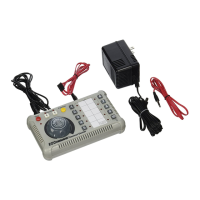With E-Z Command, you can also simulate a real railroading practice called “consisting.” Place two or more DCC-equipped
locomotives on your layout (as shown in figure 14, for example). Next, simply assign the locomotives to the same address according to
the instructions described in the “Programming a Locomotive to a Specific Address” section.
NOTE: IF YOU CHOOSE TO ARRANGE YOUR CONSIST SO THAT ONE ENGINE IS RUNNING FORWARDS AND
THE OTHER IN REVERSE, ONE ENGINE MUST BE PROGRAMMED TO OPERATE IN REVERSE AS SHOWN IN THE
“PROGRAMMING FORWARD AND REVERSE OPERATION” SECTION.
PROGRAMMING USER-INSTALLED DCC DECODERS
A separate low-current programming track is needed only for first-time programming of locomotives with user-installed decoders.
The low current to the programming track protects the decoder if the installation was performed incorrectly.
To create a programming track, connect a resistor in series with one track wire to an isolated section of track (figure 15). A 100 ohm
10W 5% Wirewound Resistor (Radio Shack Catalog # 271-135) is recommended.
Once you’ve constructed your isolated programming track, you’re ready to program a locomotive equipped with an NMRA-compliant,
user-installed DCC decoder.
First, turn the throttle knob counterclockwise fully until it stops. Next, press and hold the key for the address you wish to assign to
the new locomotive. In this example, we will use address button 7. Now, press and release the “Stop” button, then release the address
button 7. The power LED will blink fast, indicating that you are in programming mode.
Place the locomotive with the new user-installed decoder on the programming track. Next, press and release button 7. The power
LED will now blink slowly and the programmed locomotive will emit a series of small clicks indicating that the programming was
successful. If you do not hear the clicking sounds, please check to ensure that your decoder is installed properly.
Now, press and release the “Stop” button again. The power LED will stop blinking altogether and will be lit constantly. You can
check the operation of the decoder on the programming track by turning the speed knob. If the locomotive responds properly, the
installation and the programming was done successfully and you can move the locomotive to the main layout.
5
14
15

